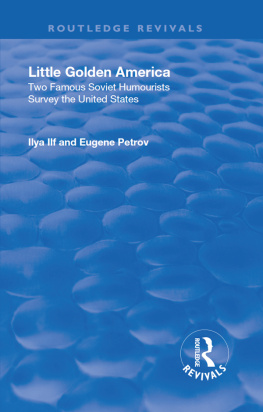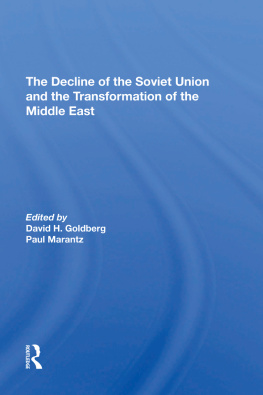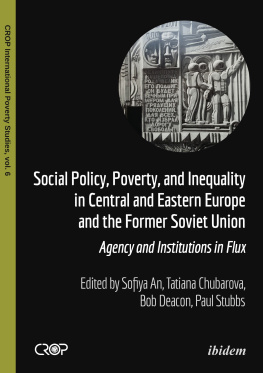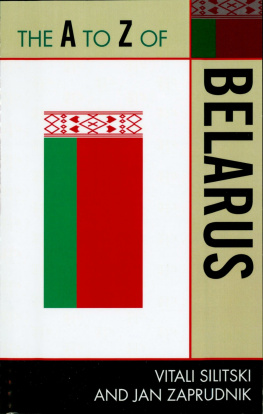A project of the U.S.-USSR Commission on the Humanities and Social Sciences of the American Council of Learned Societies and the Academy of Sciences of the USSR, administered in the United States by the International Research & Exchanges Board (IREX). Financial support for the American part of the research described in this report was provided by IREX, the Alfred P. Sloan Foundation, and the National Science Foundation; support was provided by the Academy of Sciences of the USSR for the Soviet part.
First published 1989 by Westview Press
Published 2019 by Routledge
52 Vanderbilt Avenue, New York, NY 10017
2 Park Square, Milton Park, Abingdon, Oxon OX14 4RN
Routledge is an imprint of the Taylor & Francis Group, an informa business
Copyright 1988 by John P. Robinson, Vladimir G. Andreyenkov, and Vasily D. Patrushev
All rights reserved. No part of this book may be reprinted or reproduced or utilised in any form or by any electronic, mechanical, or other means, now known or hereafter invented, including photocopying and recording, or in any information storage or retrieval system, without permission in writing from the publishers.
Notice:
Product or corporate names may be trademarks or registered trademarks, and are used only for identification and explanation without intent to infringe.
Library of Congress Cataloging-in-Publication Data
Robinson, John P.
The rhythm of everyday life.
Report of a study conducted under the auspices of
the Soviet Academy of Sciences and the Commission on
the Humanities and Social Sciences, American Council
of Learned Societies.
Bibliography: p.
Includes index.
1. Time management surveysMichiganJackson.
2. Time management surveysRussian S.F.S.R.Pskov.
3. Time managementMichiganJacksonCross-cultural
studies.4. Time managementRussian S.F.S.R.Pskov
Cross-cultural studies. 5. Quality of lifeMichigan
JacksonCrosscultural studies. 6. Quality of life
Russian S.F.S.R.PskovCross-cultural studies.
I. Andreyenkov, V. G. II. Patrushev, V. D. (Vasili
Dmitrievich) III. Title.
HN90.T5R64 1989 640.43 88-5679
ISBN 13: 978-0-367-29550-9 (hbk)
This book describes an important advance in international social science research: the first jointly cooperative survey of representative samples of the United States and the Union of Soviet Socialist Republics. The study design was comprehensive, covering almost one thousand aspects of daily life in the two countries.
Although many people assume that cooperation between the two countries in a variety of fields has become possible as a result of recent improvements in Soviet-American relations, to a large extent the causal analysis should be reversed. As a result of work on the time-use project described in the pages that followwork that proceeded even in the years of the poorest relations between the USA and the USSRenormous experience was gained on what it takes to do a joint Soviet-American survey. This experience is now being put to use in a variety of comparative public opinion polls that would have been impossible otherwise.
Scholarly relations between the United States and the Soviet Union are now entering their fourth decade. Relations in the social sciences, most of which have been administered by the International Research & Exchanges Board, sponsored by the American Council of Learned Societies and the Social Science Research Council, quietly but extensively continued without interruption during the ups and downs of the overall relationship between the two countries. Indeed, the relations between the ACLS and the USSR Academy of Sciences are now the oldest set of uninterrupted relations between the USA and the USSR, with the exception of diplomatic relations themselves. Recognizing that Soviet-American scholarly relations needed to go beyond the exchange of individuals pursuing their own research, ACLS/IREX and the USSR Academy of Sciences established the Commission on the Humanities and Social Sciences in 1975 to sponsor collaborative research projects, symposia, joint publications, and the like.
From the first meeting of the Commission in March 1975 in Tarrytown, New York, sociology has been a major component of its work. At that meeting, Talcott Parsons, Eleanor Sheldon, Nikolai Mansurov, and other representatives of the discipline in the two countries recognized the desirability of moving as quickly as possible to perform and parallel joint survey research. Their sense was that work concerning social indicators was particularly relevant to the two countries and that among the indicators of mutual interest would clearly be the use of time. Subsequently, a meeting specifically on social indicators was held in Moscow in June 1976. After some additional administrative preparation and a conference on research in social indicators, in particular in the areas of time use and work, held at the Institute of Social Research in Ann Arbor, Michigan, in October 1979, the project got underway. Eventually, pilot studies were carried out in the Soviet Union and the United States in 19821983. After further work on the questionnaire, the study itself was carried out in the beginning of 1986. By that time, the researchers on both sides had participated in more than fifteen international meetings, each lasting from one to four weeks. They had also exchanged large amounts of written correspondence in the way of draft questionnaires, field organization plans and sample designs. If one adds to this the large volume of discussion by the national organizations of both countries representing the field as a whole, it is clear that much more than the ordinary effort had to be expended to achieve this landmark collaborative survey.
The topic of time use by the people of the two countries was selected for several reasons. First, time is a most useful and direct indicator of several revealing facets of daily life in the two countries, as can be seen in the findings of this volume. Second, it is a topic that researchers in both countries had studied jointly as part of the 196566 Multinational Time Use Project. Thirdly, precisely because there had been at least some contact in this field previously under international auspices, there was a sense that both sides would be comfortable with this area. Time use, therefore, constituted a good subject for a test case of whether or not the United States and the Soviet Union could work together to produce a joint survey.
An entire separate book could be written on the difficulties encountered along the way. Among them was the mistrust of many in the American sociological community of Soviet work with data and fears of possible Soviet tampering with data. This in turn drew indignation on the part of Soviet sociologists at what they considered both insulting and unjust. The Soviet scholars felt that this distrust created American demands concerning procedures that would not have been made of other countries. Despite this rocky beginning, arrangements concerning observation of data collection and access to data were eventually reached that proved satisfactory to all.
A second major problem was that of assuring funding for the surveys in each country, and this proved to be more of an issue for the American side than for the Soviet side. In general, it was considerably easier to reach agreement on the American side on the type of project desired than it was to obtain all the various approvals necessary on the Soviet side. Once the Soviet researchers had received the go-ahead for the project, things proceeded rather smoothly on the Soviet side. Implementation on the American side was more difficult in view of the need to assure funding for the project at an appropriate level once it was clear that it would be possible to proceed with Soviet colleagues.








